Today was Emma’s seventh birthday. I remember picking her up from the Isle of Sheppey back in August 2014. She fitted into one of my hands and was ridiculously cute. It doesn’t feel like seven years.
To celebrate, I went into Stockholm to visit Sjöhistoriska, the Maritime Museum.
Sjöhistoriska opened in 1938 and has been waiting for me to visit.

I picked the perfect day for it as well. Bright, warm sunshine and a light breeze. And I wasn’t alone in thinking the day was perfect. The grass area in front of the museum was littered with swimsuit wearing sun worshippers and people playing ball games.
Actually, there were a lot of people out and about today in Stockholm. Not crowded like Oxford Street in normal times, but more crowded than I’ve seen it before during the week. Not that that had any impact on Sjöhistoriska. I spent about 90 minutes wandering the exhibits and saw maybe four other people.
I hope they get bigger visitor numbers on the weekends because it’s an excellent museum. I’ve never seen so many ship models in one place. And the museum uses them so well, telling stories of the development of ships from two distinct areas: War and commerce.
And the models come in all sorts of sizes. From massive models like the fully rigged training ships we saw in Paris back in 2014, to the tiniest model of a Viking trader vessel.
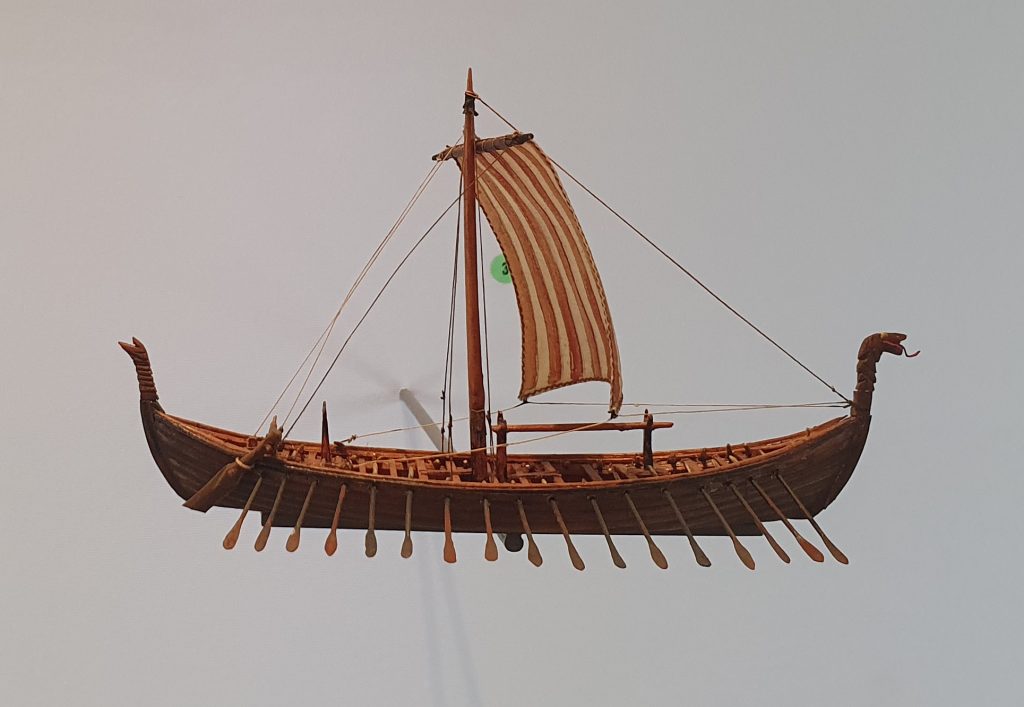
While the war and shipping galleries are in the two wings, in the middle of the museum is the stern and stateroom of King Gustav III’s royal schooner, Amphion. It’s the only bit of the boat left. And, as luxury boats go, just this little bit is enough to indicate it must have been pretty magnificent.
The actual stern is pretty impressive, but it’s when you go around to the back of the wooden structure that you realise just how amazing it must have been. This is a peek into the Versailles like world of Gustav III (1746-1792).
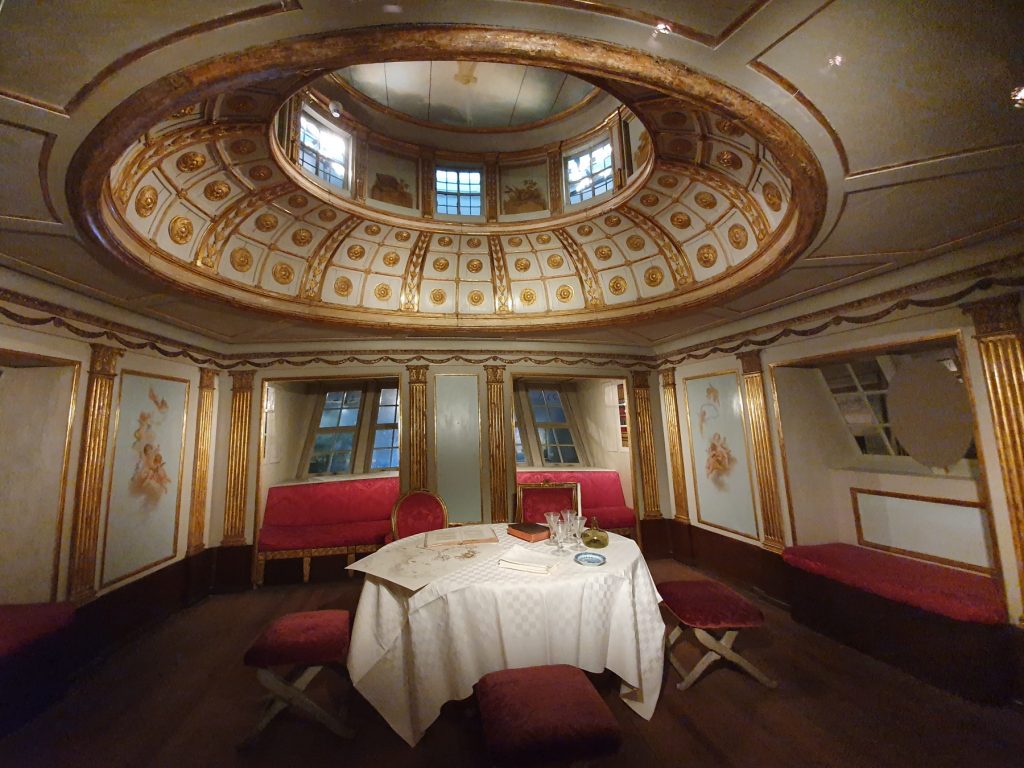
She almost came a-cropper during the war with Russia (1788-1790) when she almost didn’t make it when running the Viborg Gauntlet, as it became known. Although the Swedish Navy took heavy losses, Amphion survived. Six days later, the Swedish Navy won a decisive battle and the war ended with the signing of a peace treaty a month later.
Not that Amphion was really made for battle. And, in fact, Gustav wouldn’t have been aboard during any battles. This was not because he was a scaredy-king. It was simply because it made an excellent target for the enemy to shoot at, thinking he was aboard. He observed sea battles from one of the other, proper fighting ships.
It was while wandering around the stern that I discovered a new troubadour (for us) to sit alongside Cornelis and Evert Taube. This one was Carl Michael Bellman who, while he was a bit early to have a recording career, is still heard today. A few of his songs are still known by plenty of Swedes.
Moving along from the Amphion, the development of the fighting ship beckoned. From very early Viking raiders to models of the most recent Swedish naval vessels, it’s like ‘War at Sea in 100 Models’. So many ship models, so many developments. It’s really a brilliant way to tell a story of technological change.
Obviously I loved the move into steam but, my favourite model was one rowed by two rows of 19 oars with four men per oar developed by the Russians for coastal raids along the Swedish coast.
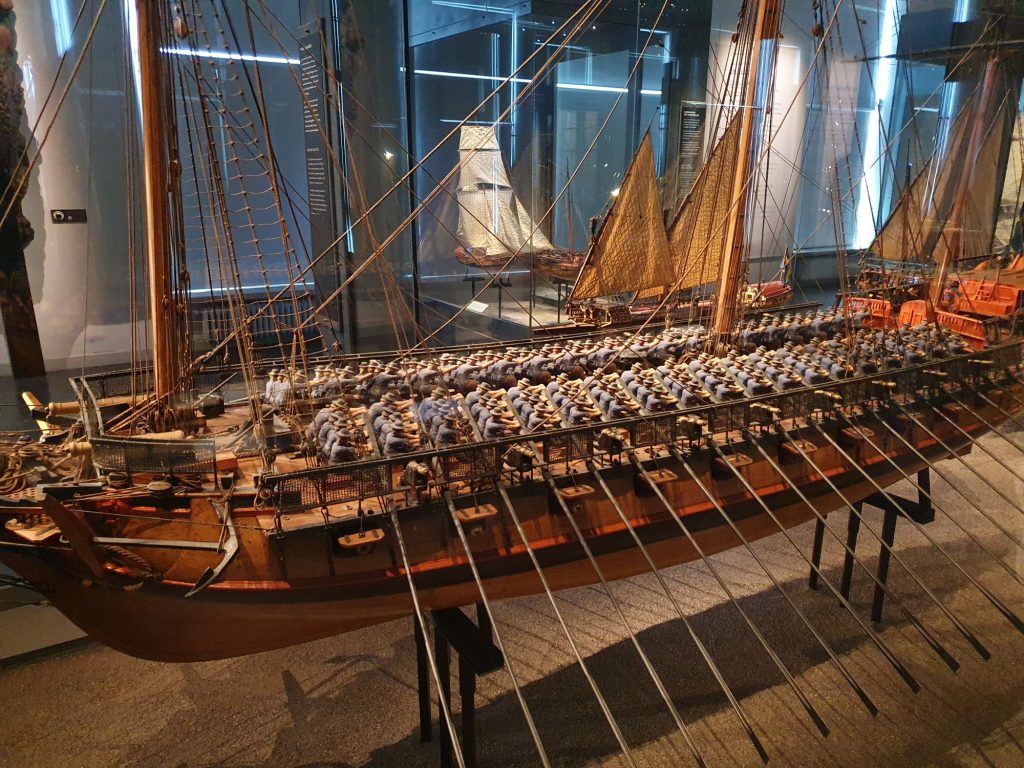
These galleys were specifically built to get in close to the coast, amid the skerries and rocks. Places where the big Swedish coastal ships couldn’t go. It was from these places that the Russians raided the coastal towns during the Great Pillage of 1719, something we discovered during our visit to Dalarö back in March.
I thoroughly enjoyed wandering among the models. It was particularly enjoyable given I was alone for most of the time. However, my favourite section has to be the one called Shipping and Shopping. It tells the story of the development of trade as seen by ship models.
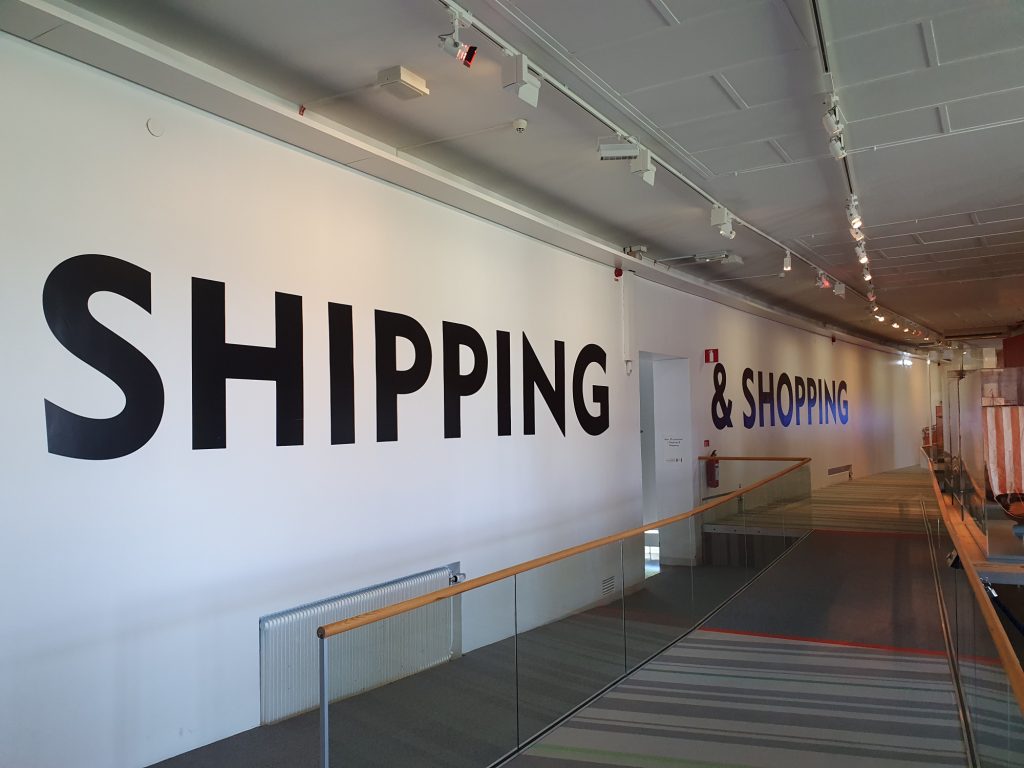
From the tiny Viking trader above to an amazing model of the zero carbon concept ship E/S Orcelle, the whole exhibit is amazing. The large room is divided into separate spaces and uses ship-like gangplanks everywhere. You wander around, and take in what is, over 2,000 years of ship building history. Obviously, I loved it.
Then, downstairs, there’s the history of the tea trade between Sweden and China. There’s no models in this section but, by using tea chests (it felt very similar to the Cutty Sark) with extracts from journals of officers and traders of the Swedish East India Company, you can trace a typical voyage. Sadly a lot of the company’s records have been destroyed, so it’s these extracts which have to tell the story.
After an amazing wander, I headed back into Stockholm proper for a snack and a beer before heading home.
The most amazing thing about today was discovering that once you go beyond the bridge onto Djurgården, the city disappears, and it’s all open grass and empty countryside. The change from city to country is instant, the border being a few international embassy buildings.
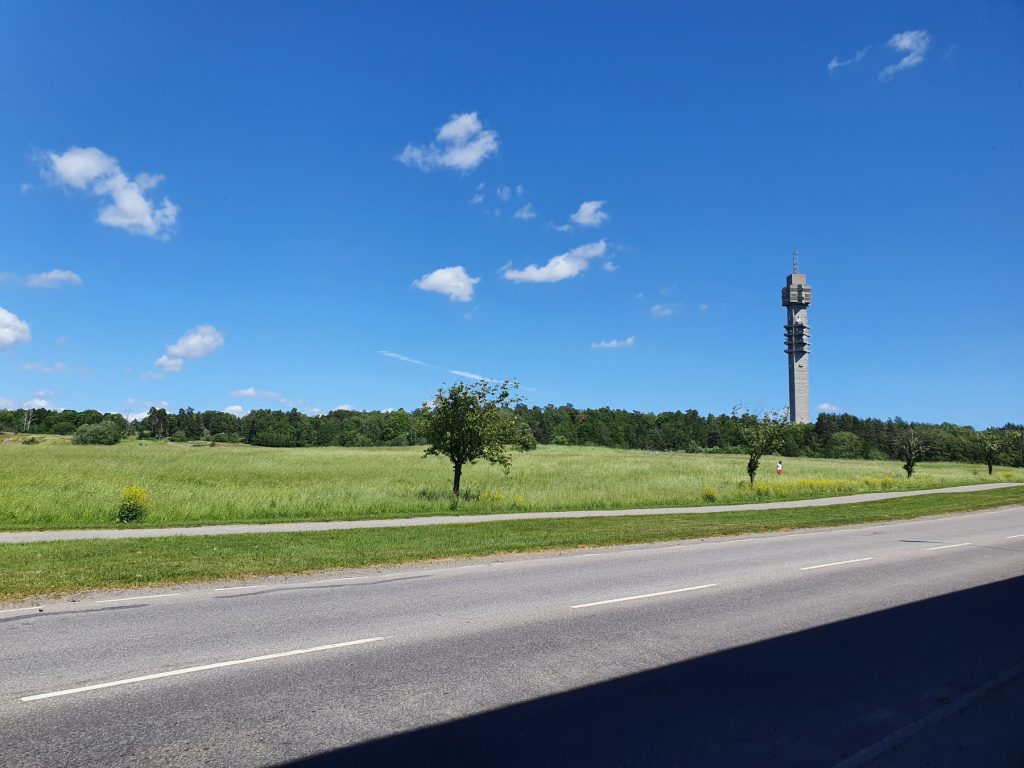
The more I see of Stockholm, the more I’m falling in love with it. It’s a wonderful city.
Of course, back in the city proper and catching buses, trams and ferries, there are crowds but, even so, they are easily manageable and never push and shove like in London. But, all that aside, I just loved today. What a lucky Gaz I am.
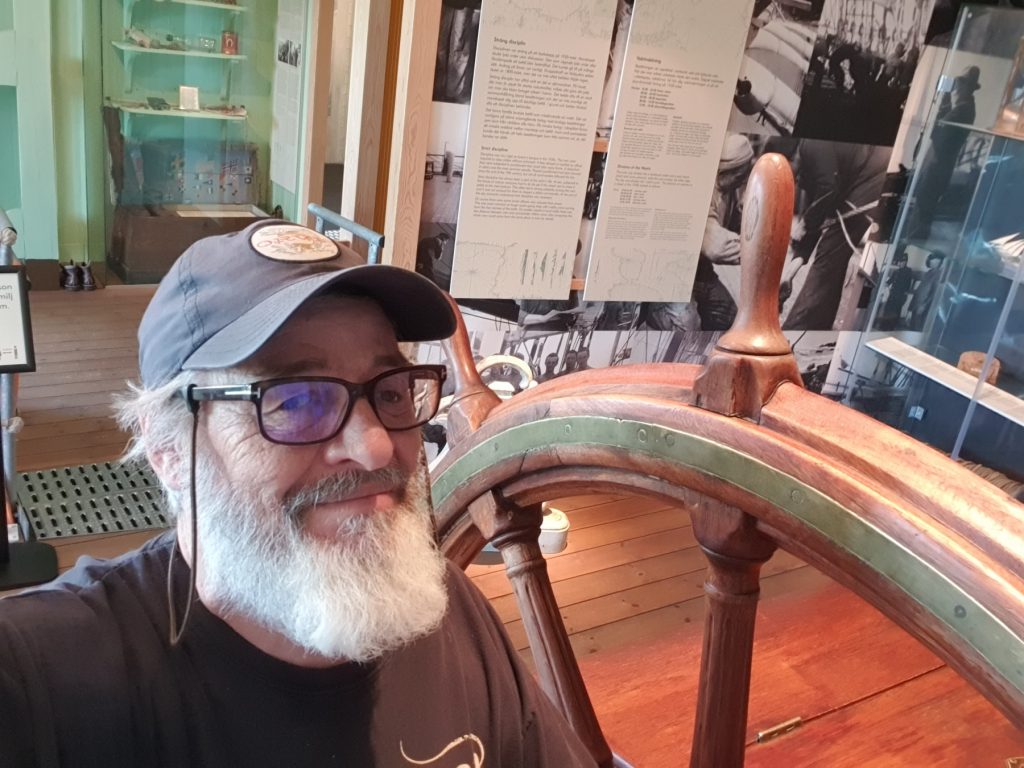



Pingback: Bellman was not very nice | The House Husband
Pingback: When Sweden plays, everyone wears yellow | The House Husband